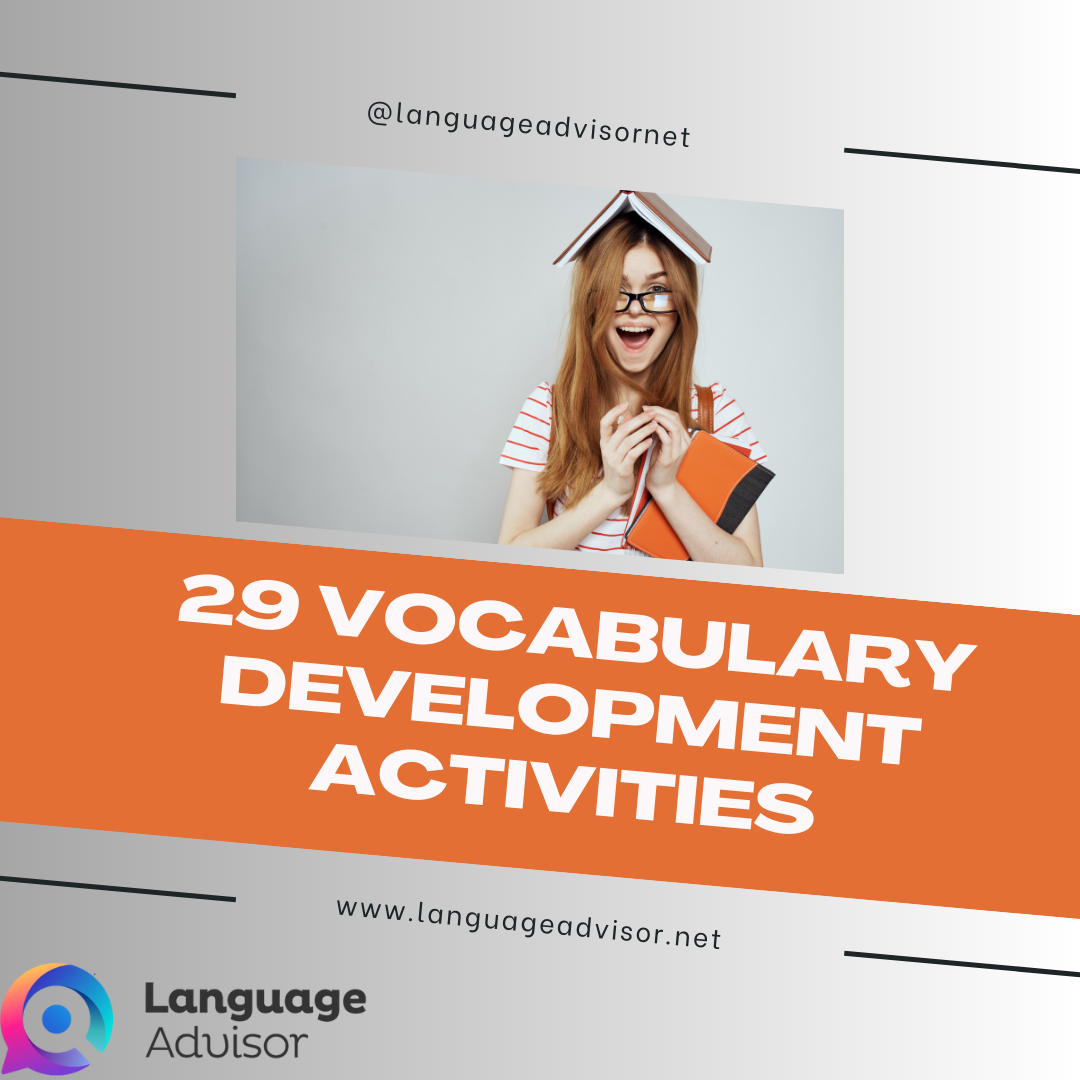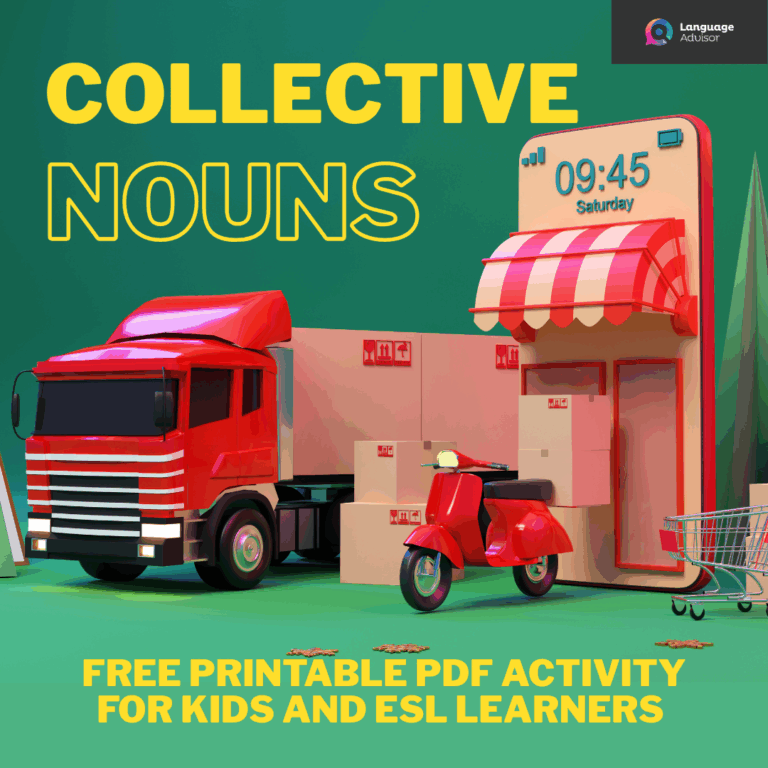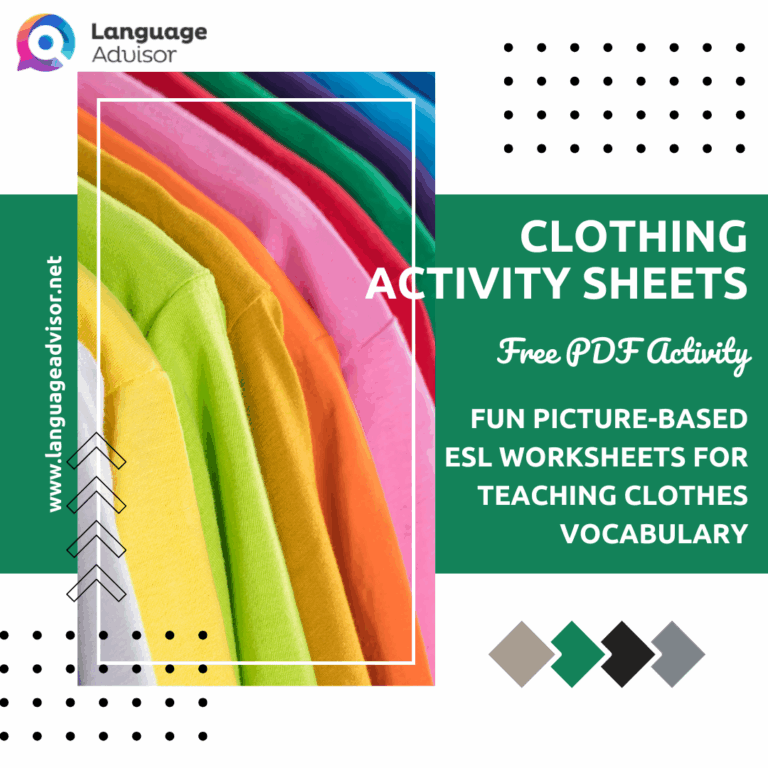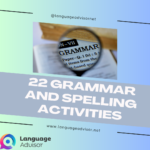29 Vocabulary Development Activities. Communicative Activities and Games for Learning
29 Vocabulary Development Activities

29 Vocabulary Development Activities
29 Vocabulary Development Activities. Coming from a variety of teacher resource books, the activities listed in these pages are designed to foster communication through high-interest and motivational tasks. Each of these activities provides the crucial opportunity for practice that is so essential to the successful acquisition of a foreign language.

Fruit Cocktail
This game is particularly exciting for beginning players to reinforce newly acquired vocabulary. Ask all students to put their chairs in a circle. One person stands in the center of the circle. To reinforce food vocabulary for example (more specifically fruit), assign each student a word – apple, pear, grape – then ask all the apples to raise their hands, all grapes, etc. The person in the center then calls out the name of a fruit – “grapes”, and everyone who was assigned grapes gets up to find a new chair and the person in the center tries to get a seat. If the player in the center calls “fruit cocktail” everyone must get up and move across the circle to find a new seat (students can’t just slide over to the next seat!)
Variations: To reinforce colors, students are assigned a color based on what they are wearing, cards that they are given to hold, etc. For all to move the center student calls out “rainbow!”; To reinforce animal names again assign each students the name of an animal at random, or provide them with visual reinforcement (giving out cards that have a picture of that animal) – all move on “zoo!”; For transportation words – bus, taxi, train, car – all move on “traffic jam!”; for meals – breakfast, lunch, snack, dinner – all move on “buffet!”. To make it more challenging, the center student doesn’t call out “breakfast” but instead says “at this meal you might eat cereal”; or for colors the student says “this is the color of the grass”; The teacher can write out these kind of prompt cards, or students can generate the prompt themselves, depending on ability levels.
From 101 Communicative Games for the English Classroom by Cyndi Turtledove

Finish the Analogy
Compile a list of analogies (analogies from TOEFL test-prep booklets would be perfect). Divide the class into teams. Read an analogy, omitting the last word, i.e. Father is to son as mother is to _____. The first team to complete the analogy by calling out “daughter” scores a point for that team.
From Mind Joggers! by Susan S. Petreshene
29 Vocabulary Development Activities

Alphabet-Cereal Words
Form groups of 2-3 students. Give each group a paper cup filled with alphabet cereal (you can also use alphabet-shaped pasta, or make small letter cards that the students can use, or the letters from a Scrabble set, etc.) Set the timer and see how many words each team can form in a given period of time. Teams receive 1 point for 2 ltr words, 2 for 3 ltr words, etc. (Similar to the game “Boggle”) Possible Extension: Teams do not score a point for a word unless they are able to use it in a complete sentence. This game can also be played as a competition between the members within each group rather than between groups.
From Social Games for Recreation by Borst-Mitchell

Look At What We Bought
Students work together in pairs. They are instructed to think of some object that they mime. The first pair comes to the front of the class and says: We went to London (or anywhere you choose) and we bought (a tie, a necklace, a hat, a t.v. set, a tennis racket, a pair of shoes, a piano, a cat [meows are acceptable], a camera, etc.) The sentence is spoken except for the object purchased – it is mimed. The class guesses what they bought and when the object is correctly guessed the next pair comes to the front of the class. The teacher should write the opening sentence on the board, along with a list of all of the objects as they are presented. Each pair repeats the sentence and acts out all of the mimes before adding their own.
From Language Teaching Games and Contests by W.R. Lee
29 Vocabulary Development Activities

Dominoes
Students form small groups (3-6 players). Each player selects 5 dominoes from the face-down pile of dominoes on the table. Player 1 lays down a domino and the player to his/her right then lays down a domino on either end of the first to make a match. If the player does not have a domino to play, he/she selects dominoes from the pile until he/she finds one to match. Dominoes, like bingo cards, are a staple of EFL game strategies to reinforce a W I D E variety of vocabulary/grammar concepts. Make your dominoes by cutting up index cards. Draw a line down the middle and on one side you may put a vocabulary word – on the other side a definition; on one side a prefix – the other a suffix (be sure you then have complementary word cards to go with the prefixes and suffixes), on one side a number (10) – the other a number word (SIX), etc. After you have made your domino sets you may want to laminate them for strength in repeated use.
From Grammar Games by Mario Rinvolucri

Partner Words
Two pairs of partners sit across from each other. One player deals 5 cards to each player (for a set of 20 cards, 3 to each for a set of 12, etc.), including him/herself. Player A selects one of his/her cards and makes a sentence using one of the homonyms on the card, then repeats the homonym, e.g. She wore a plain dress…plain. His/her partner then must make a statement using the other homonym on player A’s card (more advanced players are not allowed to look at their partner’s card). e.g. I was on a plane yesterday…plane. If both player A and his/her partner are able to make sentences using the homonyms on the card, they discard that card – placing it in the center of the table. If either player is incorrect, the player keeps the card for another turn. The first pair to throw in all of their cards win the game.
Variations – You can use this with words spelled alike, with different meanings (an excellent list in the ESL Teachers’ Book of Lists), with synonyms or antonyms, or with any two words written on the cards – you can use it simply to reinforce new vocabulary words. It is also good to emphasize verb tense – a verb can be written on the card, and two tenses, e.g. “love”, simple past/past perfect.
From Thinking Games 2 by Anderson and Bereiter

Doublets
Students work in pairs. Write two words up on the board, i.e. sad, fun. Show them how you can change the word sad to fun, by changing one letter at a time. Explain that each change must produce a new, real word. e.g. sad – sat – fat – fan – fun. or wet to dry: wet – pet – pat – pay – day – dry. Have the students write a complete sentence for each new word they create. Further challenge: Have the students write a sentence using as many of the words in the transition as possible. e.g. The sad, fat man sat all alone and never had any fun.
From Social Games for Recreation by Borst-Mitchell
29 Vocabulary Development Activities

Idioms
This can be used to introduce new idioms to the students or to reinforce previously learned idioms. Divide the class into teams. The teacher reads an idiom and asks the first person in line on team 1 to state (or guess) the idiom’s meaning (team members are encouraged to help). If the student gets it right, that team receives a point. If the student misses it, the next team has a chance to provide an explanation and receive a point. After answering a question the student moves to the back of the line of his/her team, allowing another student an opportunity to guess. One way to make this easier is to use an overhead projector and show each idiom with 2 or 3 possible explanations and ask the student to choose the one that is a match. I have found that this is an excellent way to present idioms. I usually follow this up with a handout for the students to work on, using the idioms we have just discussed.
From Mind Joggers! by Susan S. Petreshene

Where’s My Partner?
Each student is given a 3×5 card. The students must then walk around the room and find the match to the statement on their card, e.g. this is ideally suited to introducing students to new idioms or proverbs. An idiom can be written on one card, the meaning of the idiom on another; or one-half of a proverb can be written on one card, the other half on another. Students have to talk to each other, compare cards and determine what makes the most sense – develops critical thinking skills as well as vocabulary. Expansion: Once each student has met his/her match, they present the proverb/idiom to their classmates, giving an example of a situation when it would be appropriate to use that phrase.
Variation: You can have vocabulary word on one card and a sentence on a matching card with a blank space where the vocabulary word belongs; antonyms; synonyms; vocabulary words and matching definitions; sentences with missing prepositions/adjectives/verbs (with a variety of tenses in the match mix).
From Look Who’s Talking by M.A. Christison and S. Bassano
29 Vocabulary Development Activities

Taste Test
After preparation for the game (in the form of studying a larger themed unit on the senses and/or adjectives – i.e. students should have had a recent review of adjectives used to describe the way things feel, taste, smell, sound), students are seated back-to-back with a partner. One of the students is blindfolded, the other has paper and pencil and is prepared to take notes. The teacher gives food to the blindfolded students and the students then describe the food in a way that helps their partner to guess what it is. The writing partner numbers the paper from 1-3 and records his/her guesses (confirmation of the guesses comes after the game). After the blindfolded students have tasted and described 3 different foods, the roles are switched. A discussion follows with each student revealing what he/she ate and partners giving reasons for their guesses.
Variation: Comparative and Superlative Taste Test – As a reinforcement to studying comparatives and superlatives bring in items for students to evaluate and compare (e.g. green grapes and limes – which is bigger?, more sour?, sweeter? – green grapes, limes and pears – which is the biggest? the sweetest? which has the most interesting shape?, etc.) Nice items for comparison are: different types of mints, marshmallows and chewy caramels, rice cakes and potato chips and pretzels, etc. Students work in pairs to taste the foods, make comparisons and prepare charts identifying comparative and/or superlative statements regarding the foods.
From Fun with Grammar by Suzanne Woodward

Objects with Body Parts
This can be done individually or in pairs – the first to finish with the longest list of words wins. Give the students a handout with objects listed and ask them to name the body part which is used to describe that object, e.g. clock (face, hands), needle (eye), pin(head), bottle (neck), potato (eyes, skin), jar (mouth), zipper (teeth), shoe (tongue, toe, heel), car (body), chair (legs, arms, back, seat, feet), socks (heel, toe), bed (foot, head), cornstalk (ears), saw (teeth), river (mouth), loaf of bread (heels), storm (eye), macaroni (elbow), road (shoulder) This is an excellent reinforcement activity for body-part vocabulary.
From Mind Joggers! by Susan S. Petreshene

Password
Played like the t.v. game show. 4 chairs are arranged at the front of the class, 2 facing the blackboard 2 facing the class. The class is divided into 2 teams. 2 students from each team come to the front of the class, one from each team faces the blackboard, the other faces the class. The teacher then writes a word on the blackboard. Team 1 goes first with the student facing the board giving his/her teammate a one-word clue as to the word, e.g. The word is “shoe” Team 1 Student A: says “foot”, Team 1 Student B: “walk”, Team 2 Student A: “sock”, Team 2 Student B: “shoe.” Team 2 wins the round and the next pair of students from each team comes up to the front.

Observe and Remember
A wide selection of small, easily identifiable objects are arranged on a tray (i.e. pencil, watch, teaspoon, needle and thread, beans, buttons, ruler, notebook, pen, stapler, tea bag, grapes, glue, toothbrush, etc. – whatever seems appropriate to the language level of the class, although it is not essential that the students know all of the words and, in fact, it is an excellent opportunity to introduce some new vocabulary). The tray is placed on a desk at the front of the room and the students are invited to come up and study the tray for a given length of time (no more than 2 minutes). The students then return to their seats and are asked to make a list of as many of the objects as they can remember (at this point you have covered the tray with a cloth). Allow about 5 minutes for the students to recall and write down the names of the things they have observed. Then ask the students how many items they recalled – the one with the most objects should then read out his/her list and the class can check it against the actual items on the tray. Students get 1 point for each correct word and the one with the most points wins.
From 101 Word Games by George P. McCallum

I spy
This is an old game, but it is super for beginning students, to help them to see how many words they really know and to build on that vocabulary. One student starts by saying “I spy, with my little eye, something beginning with the letter (e.g. “b”) Others then guess what the object is – Is it the blackboard? No, it isn’t. Is it a book? Yes, it is. (Encourage the students to use complete sentences in their guesses and responses and help them with the appropriate structure by writing sample sentences on the board). The questions continue until someone guesses the object. Then it is their turn.
From Language Teaching Games and Contests by W.R. Lee
29 Vocabulary Development Activities

Sit down then
This is an excellent activity for beginning level learners. Ask everybody to stand up. If you want to review knowledge of time, you would tell the students to sit down when they hear the time that they went to bed the night before – “who went to bed at 11:00 p.m.?”, “who went to bed at a quarter to 12:00?”, etc. Get them back on their feet as soon as all have sat down to ask more “time-related” questions, time they got up, time they had breakfast, time they got to school, etc., etc. This also works well with reinforcing food vocabulary “sit down if you ate rice yesterday”, etc., action verbs “who went shopping yesterday?”, “who did the dishes last night?”, etc.
From More Grammar Games by Mario Rinvolucri and Paul Davis
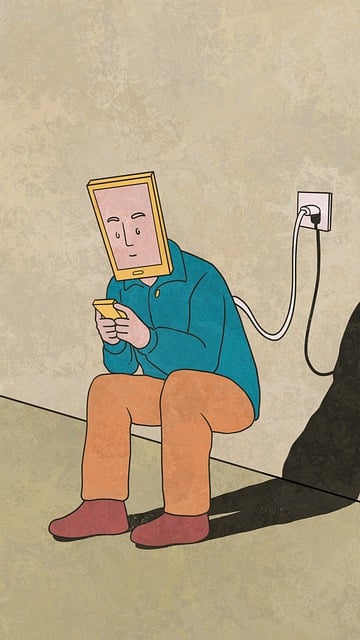
Sequencing
Divide students into teams. Put a series of words on the OHP and ask one person from team A to put the words into sequence (team members should be encouraged to help). When the student puts it into sequence, ask that they explain the reason for the sequence, i.e. smallest to largest, steps in a process, times of day from beginning to end, etc. Go back and forth between the teams, with each member of the team having an opportunity to speak, with the help of his/her teammates.
Variation: Mismatch – Follow same procedure as in “sequencing” above. In this case the list of words on the OHP are 3 items that belong together and one that does not. The student must identify the object that does not belong and then explain why. Points can be awarded to the team – 1 point for a correct identification of the mismatch, 1 for the explanation. This is an activity that can be done in pairs or small groups from a handout, instead of as a team activity with the OHP.
From Mind Joggers! by Susan S. Petreshene

I Packed My Bag for Alaska/The A to Z Banquet/Shopping Tour
All of these are different themes for a popular and very successful game for beginners. In the case of “I packed my bag for Alaska” – each student says the sentence and then contributes an item to be packed beginning with A and then with each subsequent letter of the alphabet as it moves from student to student: I packed my bag for Alaska and in my bag I put an apple…the next student repeats what the student(s) said before and adds an item …. and a book, and a comb, etc. The A to Z Banquet is the same, describing food that was eaten at a banquet, and the Shopping Tour can include all kinds of items of clothing, food, and miscellaneous supplies. All of these games follow the same pattern of students contributing an item and listening closely to repeat the items that have come before (be sure to write the initial sentence on the board). An added bonus to vocabulary development is practice with articles. To ensure that everyone stays engaged, do not proceed around the room in a logical pattern – use a soft object to toss to a student who makes a contribution and then tosses it to another student. Make it clear that a student can contribute to the activity more than once.
From 101 Word Games by George P. McCallum

Memory Round
Each student has a card with a verb written on it and they must make a sentence using that word in the past tense (or any tense you choose). e.g. “eat” – a student says “I ate eggs for breakfast yesterday”, next student has “sleep” and says “Joe ate eggs for breakfast yesterday and I slept until 10:00 this morning,”…etc.

Match the Adjectives
Write 3 adjectives on the board. Have the students work individually or in pairs to think of what things might be described by all three of those adjectives, e.g. important/dangerous/heavy = car, plane, army. Suggestions: beautiful/big/cold, green/young/expensive, small/lucky/free, expensive/wonderful/hot, expensive/heavy/interesting, wonderful/exciting/dangerous, funny/small/thin, etc.
From Five-Minute Activities by Penny Ur and Andrew Wright
29 Vocabulary Development Activities

Vocabulary Steps
Draw a series of steps on the board. Write “warm” on a middle step. Ask the students to suggest words they could write on the other steps to describe degrees of warmth, which are warmer or colder than the word “warm”, e.g. freezing, cold, chilly, cool, mild, warm, hot, sweltering. You can use this for any continuum – temperature (as above), size, quality, happiness, speed (represented by speed of movement – walking, jogging, running, sprinting or what moves faster – legs, bicycle, bus, car, train, plane), frequency, liking. This is an especially important activity for high intermediate and advanced students – encourage use of a thesaurus.
From Five-Minute Activities by Penny Ur and Andrew Wright

Around the World
Students are seated in rows or a circle. One student is standing. Student A stands behind student B. This is an ideal game for beginners, but can easily be adapted for higher levels by reading out words, definitions, antonyms, etc. For beginners, you can show a picture card – of an animal, a color, a type of clothing, etc. The first student (A or B) to identify the correct word moves on to stand behind the next person. If student A is standing and student B answers correctly, student A takes B’s seat and student B moves on to stand behind Student C. The object is to get all the way “around the world” by correctly identifying vocabulary words. (Each student keeps track of the number of his moves and the one with the most moves at the end of the game wins.
From Peggy A. Okimoto, Resource Teacher – Anaheim City School District

Fly Swatter Relays
Students are divided into teams. The first person in line on each team is given a fly swatter. On the board the teacher can tape pictures of vocabulary words studied (i.e. animals, clothing, food, etc.), or clock faces with different times, or write a group of words placed at random all over the board which the students will then match to the teacher’s directive. In the case of clocks, the teacher would say “show me ten o’clock” and the first person to run up to the board and hit the appropriate clock with the fly swatter would get a point for his/her team. The fly swatters are then passed on to the next person in line. This is a lively, exciting and noisy game that the students really enjoy, but you do need to consider the possible impact on those around you and use it in situations when loud voices will not cause problems for others.

Real Time
This is an activity that works very well with younger students but
can also be a lot of fun with adult students in the right environment. Arrange two circles of 12 chairs and put a number 1-12 on each chair (representing the clock, in each circle). Divide the class into two teams. Further divide the teams in half, one-half are told that they represent the hour hand, the other half of each team represents the minute hand. Assign one student to observe and keep score. The teacher then calls out the time (quarter to six) and the minute-hand students on each team must line up behind the chair with the number 9 on it, the hour-hand student line up between the 5 and the 6. The first team to successfully arrange themselves gets a point.
Adapted from More Grammar Games by Mario Rinvolucri and Paul Davis

Taboo
The class is divided into teams. A student from the first team comes to
the front of the class and is given a word card. The student must then try to elicit that word from her team, giving a description/definition, but NEVER using that word or any form of that word. This is one of the very best activities for reinforcing newly learned vocabulary. The game came be made more difficult by giving the vocabulary word and selected other words (2 or 3) that may not be used, but this becomes very difficult and is best for high intermediate+ students.
From The Resourceful English Teacher by Chandler & Stone
29 Vocabulary Development Activities

Concentration
Take the vocabulary words your class is currently studying and a definition for each word and assign each word and definition a number. For e.g.
(1) Square (5) A shape that has four equal sides
(16) Cat (13) A domesticated animal that eats mice
(3) Dog (4) A domesticated animal that chases cats
(11) Pen (20) A writing implement using ink
(17) Dime (2) One-tenth of a dollar
(6) Oatmeal (19) Hot cereal made from rolled oats
(7) Pencil (12) A writing implement of wood and graphite
(8) Triangle (15) A three sided figure
(10) Nickle (18) One-twentieth of a dollar
(9) Cornflakes (14) Cold cereal made from corn
Draw a grid on the board and place a number in each square. Students are divided into teams. One member from team A calls out #1 and #14, you say “#1=square, #14=cold cereal made from corn. There is no match so you move on to the student from team B. It goes back and forth with students calling out and attempting to make matches. As each match is located, that square is colored-in on the board. Students may not write anything down to help them remember where the match is. I have found this to be a phenomenally successful way to review vocabulary that works at all levels – from high beginners through advanced.
Adapted from the television game show “Concentration“

Memory Game
Make cards with matching pairs. It can be a picture of the same object to be matched (a chair and a chair), or it can be a vocabulary word on one card the definition on another, or it can be ½ of an idiom on one card and the other half on another, or it can be a singular form on one card (a cat) and the plural form on the other card (some cats). There are endless possibilities for matching sets to reinforce a variety of concepts.
From Grammar Practice Activities by Penny Ur

Categories
This game can be played in a variety of ways. You can divide the class into teams and then have one person from each team come to the front of the class. Have them turn their backs to the board as they face the class. Then write a category on the board such as “Things in a kitchen” – students in the class then shout out (or are specifically called on by the teacher) something that is found in the kitchen “stove”, “refrigerator”, etc. The first person at the front of the room to guess the correct category wins a point for his/her team and the next person from each team then comes to the front of the classroom. You put a pile of category cards on the table in front of you. Then you call on Team A to name 5 (or more depending on ability levels) things associated with that category in a specific period of time (15 seconds or less depending on ability levels). You can allow anyone in the team to respond (if you want to make the game easier), or you can focus on one person on the team (“Paul, name five things that are white”) if he can do it in the time allotted, he receives 1 point for his team. This variation on Categories is a variation on yet another game “Outburst”. In Outburst the student comes to the front and receives a card that has a category “Cuba” and 5 items associated with the category “sugar, Castro, island, Hemmingway, cigars”. That student must then get his team to name all of the things on the card within the time period. Other answers related to the topic are not accepted. The student at the front is allowed to give clues. “This is something sweet, that is white and in a lot of desserts” (sugar).
Adapted from Outburst and $60,000 Pyramid
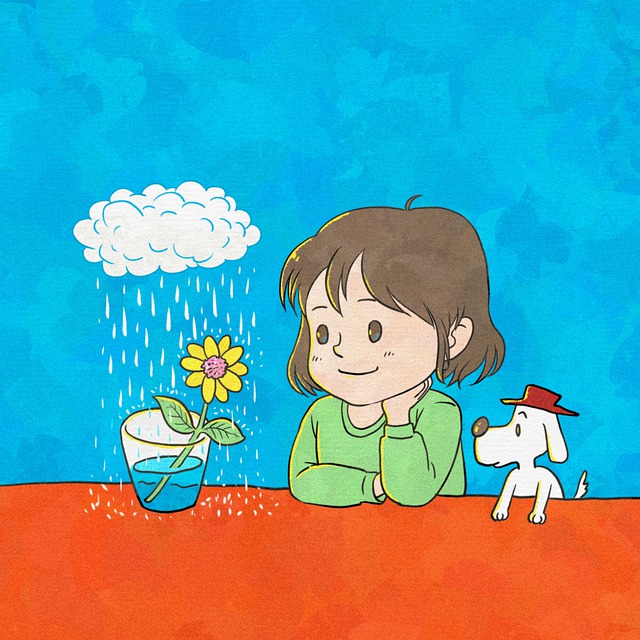
Association Cards
Make a number of cards (at least 3 for each student) that have pictures or words on them (pictures for beginning levels, words for higher levels). Put one card on the board with tape (e.g. a picture of a dog). Then ask students to find a card in their deck that has a relationship to a dog (e.g. a student might come up to the board and tape a picture of a table next to the dog saying that both have 4 legs); the next student might come up and tape a picture of a pencil next to the table saying that they are both made of wood, etc. You can play this, domino style as a whole class, or you can put students in pairs or small groups to work with the cards and make associations. For higher level students you can use words to expand their vocabulary and critical thinking skills as they attempt to determine associations. *Students can find things that the cards have in common – they both…, or that neither item/thing has – neither …
From Grammar Practice Activities by Penny Ur
29 Vocabulary Development Activities

Keep the Balloon in the Air
This activity can be used as a grammar or vocabulary review. In the case of vocabulary, for a beginning level class, tell the students that they are going to be calling out vocabulary words associated with a particular category (e.g. body parts, colors, numbers, furniture, clothing, etc.) Students get in a circle (if you have a large class, you should have multiple circles of 8-10 students). The object is to keep the balloon in the air (this can also be done with a beach ball); it must not touch the ground. But before students can hit the balloon up, they must first call out a word from the vocabulary area selected for review. (For very low-level beginners or young children, you may want to allow repetitions). You can also do this as a grammar review. Write a list of verbs on the board, tell the students they must call out the past tense (or whatever tense you’re practicing) of a verb of their choice before they hit the balloon, then cross off the verbs on the board as they are used until no verbs remain.
From The Standby Book edited by Seth Lindstromberg

29 Vocabulary Development Activities
29 Vocabulary Development Activities. Also check out these Vocabulary activities


